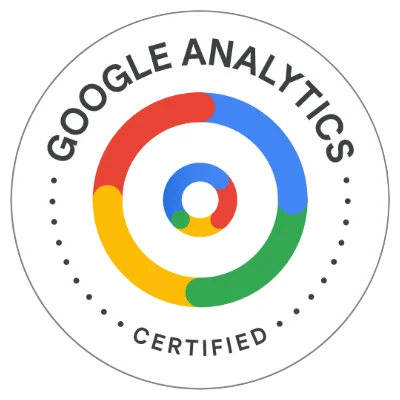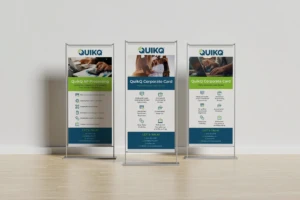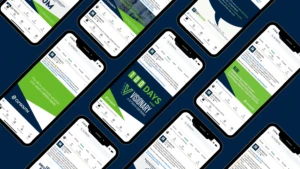It’s the most wonderful time of the year…
No, I’m not talking about Christmas. It’s budgeting season! Most companies are deep in their 2026 budget planning right now, making this the perfect time to think strategically about where to allocate next year’s marketing dollars. I know this is a busy and hectic time for us business leaders. We have so much we still need to get done this year, how can we possibly wrap our heads around what we’re going to need to allocate for next year’s objectives?
But it’s an important question, because if you’re planning to allocate the same budgets to the same marketing channels you’ve always used, you’re essentially planning to get the same results while your competitors leap ahead. Instead, the smart money is on identifying the tactics that are hitting their stride right now, before they become saturated and expensive.
After analyzing hundreds of campaigns and working with brands across industries, I’ve identified five marketing tactics that I believe deserve a line item in your 2026 budget. And the best part? These are proven strategies that are still flying under many marketers’ radars.
Partnerships with Micro-influencers
Let’s start with the biggest opportunity hiding in plain sight. While your competitors are still spending big money leveraging those well-known mega-influencers, many brands are pivoting to micro-influencers to boost ROI.
The traditional influencer marketing model has changed over the last few years, and it’s become much more affordable to partner with micro-influencers. According to HubSpot, Micro-influencers inspire up to 60% more engagement than other influencers. Additionally, 44% of marketers said they prefer micro-influencers because they cost less.
Micro-influencers may cost less, but do they generate the same results as the bigger names? Well, according to Influencer Marketing Hub, micro-Instagram influencers boast an average engagement rate of 3.86%, while mega-influencers see only 1.21%.
With smaller follower counts and more focused content, micro-influencers often have higher engagement rates and a more authentic connection with their audience because the people engaging with them trust their opinions and seek out their knowledge. As consumer trust in sponsored content from major influencers seems to be eroding, you may want to consider shifting 30-50% of your current influencer budget toward 10-15 micro-partnerships instead of a small handful of macro-influencer campaigns. A $50,000 reallocation could transform your creator marketing ROI.
Perplexity AI for Competitive Intelligence
While everyone’s talking about ChatGPT, Gemini and Copilit, most marketers are sleeping on Perplexity AI for competitive research and trend analysis. Unlike traditional AI chatbots, Perplexity provides real-time, sourced answers that can revolutionize your market research process.
Perplexity searches the web in real-time and provides citations for every claim, making it perfect for competitive analysis, trend identification and content gap analysis. You can ask it to analyze your competitors’ recent content strategies, identify emerging industry trends or research new market opportunities. And it will provide verifiable sources you can easily research.
Here are just a few things you can try with Perplexity:
- Weekly competitive content audits
- Real-time trend analysis for content planning
- Customer sentiment research across multiple platforms
- Industry report synthesis and insight extraction
Perplexity offers a free standard plan and a Pro plan for $20/month per user.
Clay.com for Hyper-Personalized Outreach
If your sales and marketing teams are still using generic outreach templates, Clay.com could be the thing you need to break out of a creative drought. This AI-powered research and personalization platform can automate the kind of deep prospect research that used to take hours per lead.
Clay automatically researches prospects using multiple data sources, then generates highly personalized outreach messages based on recent company news, social media activity, mutual connections and industry-specific insights. And, as email inboxes become more crowded and spam filters more sophisticated, Clay bridges the gap between marketing automation and sales personalization to ensure higher deliverability for your messaging.
You can try Clay for free, and then the starter plan is $134/month for up to 5,000 people/company searches.
Motion for Marketing Team Productivity
Having trouble tracking productivity and managing time? Motion uses AI to automatically schedule your team’s tasks, meetings and deadlines while protecting focus time so you can knock out those pesky to-do list tasks that never seem to get done.
Marketing teams seem to love Motion because while it schedules meetings, it also makes it easy to schedule your actual work. It automatically blocks time for campaign development, content creation and strategic planning while optimizing your time around meetings and deadlines.
Professionals and small teams can use Motion for $19 per seat per month, and there is a free trial.
Canva’s AI Brand Hub
Most marketers think of Canva as a simple design tool, but their AI-powered Brand Hub feature can help maintain visual consistency across all marketing materials.
Canva’s Brand Hub uses AI to automatically apply your brand guidelines to any design, ensuring color accuracy, font consistency and style adherence even when non-designers create marketing materials. It’s like having a brand manager embedded in every design decision.
You can also use it for refreshing your brand guidelines themselves. Canva’s AI can analyze your existing visual assets and suggest updated color palettes, typography combinations and design systems that feel fresh but stay true to your brand essence.
Canva Pro for Teams starts at $120/year for one user, and Canva Teams starts at $100/year with a minimum of three users.
The Bottom Line: Budget for Tomorrow, Not Yesterday
The marketing tactics that dominated 2024 won’t drive growth in 2026. While your competitors are planning to do more of the same, you have the opportunity to leap ahead with strategic investments in tools and tactics that are hitting their stride right now. The question isn’t whether these tactics will become mainstream, it’s whether you’ll adopt them before or after your competition.
Ready to build a 2026 marketing budget that actually drives competitive advantage? Let’s talk about building a 2026 marketing strategy that puts you ahead of the curve. Schedule a consultation with our team while your budget planning is still flexible.
Kedran Brush, Brand825’s Co-Founder and CEO, has more than 28 years of marketing leadership experience at the SVP and CMO levels, including revenue growth, customer satisfaction, brand awareness, etc. When she’s not helping brands be their best, Kedran can be found relaxing on the lake, at Tennessee Titans games and trying to stop her dog from chasing the elusive neighborhood squirrel.











